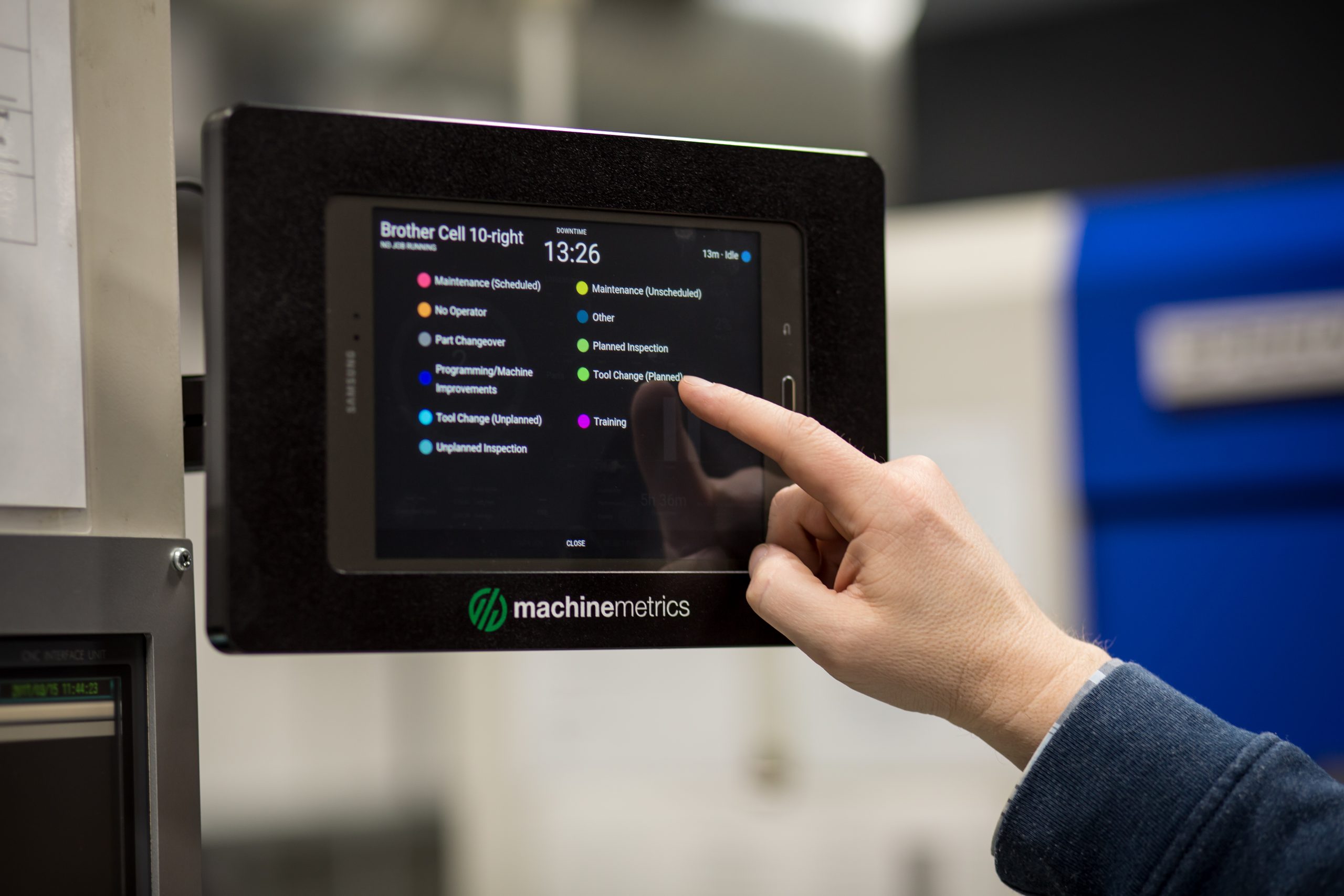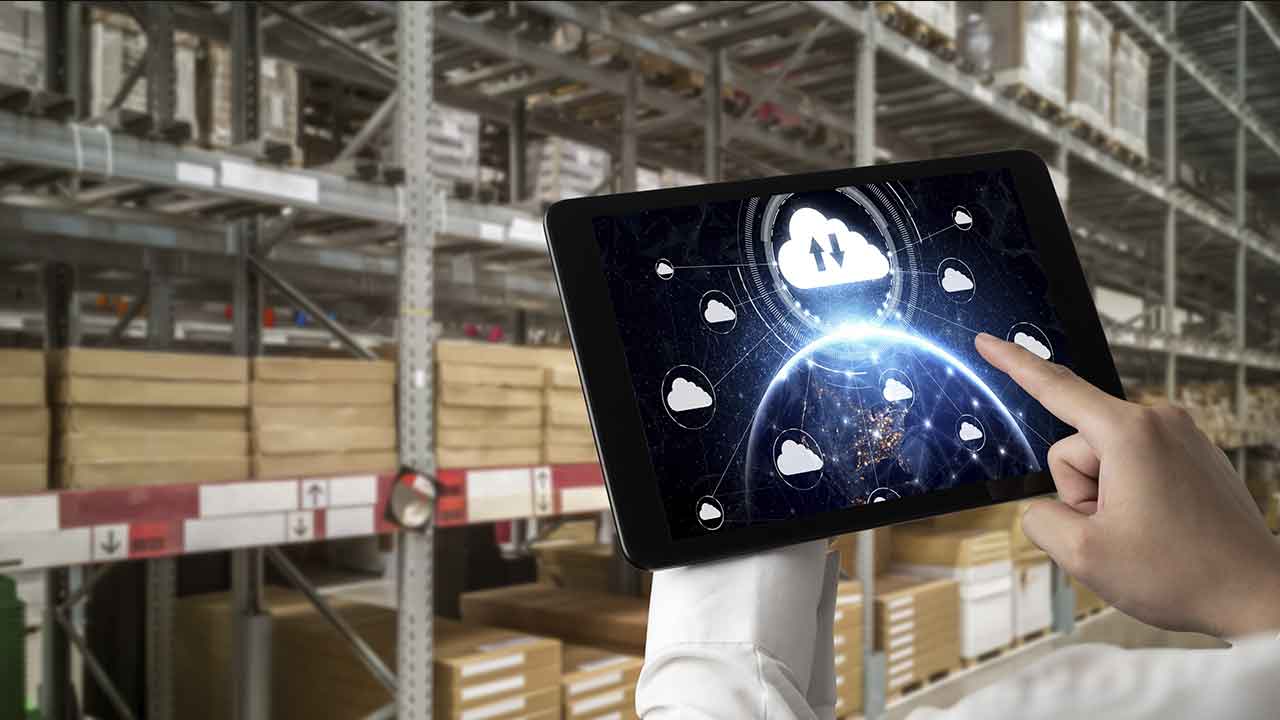Operational Efficiency and a Holistic View of IIoT: Part 2
To fully understand what Industrial IoT can do for operational efficiency, one must take a holistic view of its benefits. As previously discussed, Industrial IoT involves the connectivity of all aspects of a factory’s assets. This includes production equipment, inventory, supply chain, maintenance, quality and business operations. In past revolutions, specific linear progress was made in one or more functional area while progress was made in other areas in subsequent revolutions.
Now, with the arrival of Industrial IoT, all functional areas within a factory are impacted across the board and all assets and subsystems are linked together. This horizontal integration coupled with deep analytics in specialized IoT software allows for the creation of a “smart” factory where all assets are harnessed to improve operational efficiency using AI, machine learning, and device connectivity.
The result is a system that can identify trends, take independent and sometimes autonomous action and respond much faster than human intervention to allow efficiency gains previously impossible. It is this distinction that sets Industry 4.0 apart from all past revolutions as it is something that must be utilized by the whole enterprise to understand and implement its IIoT benefits. In this system, data is unsiloed from its traditional “island” mentality between departments and one database can be used for the entire operation. The data is available to all so that the entire enterprise operates under a single version of truth. And as the analytics within the software evolve through machine learning algorithms, the system becomes even more efficient over time.
In traditional manufacturing, heavy emphasis was placed on making production equipment more efficient. And beyond the equipment itself, programs such as Lean and Six Sigma evolved to manage and improve on those efficiencies. It was both linear in focus and reliant upon human initiative to succeed. Outside of production, other functional areas were considered ancillary and considered mere “overhead”, and to the extent that they were tasked to participate, it was always in support of how to make the production floor, production staff and production efforts more efficient. With Industrial IoT applications, functional areas outside of production such as supply chain, purchasing, scheduling, quality and industrial engineering, move from a strictly support role to one where their use of data and analytics within the system contributes directly to the improvement of overall operational efficiency because they are part of an uninterrupted, integrated system.
Efficiency Benefits by Area
A review of how each critical area is impacted individually can help us understand how overall operational efficiency improves within the system.
Production
The most obvious place to start is in production at the shop floor level. Industrial IoT relies on software and analytics, but it also depends upon devices connected directly to the production equipment. Here, implanted devices and sensors can monitor such things as production rate, quality specifications such as tolerance or weight variance, ambient conditions, and numerous functions that provide overall health and operational status information such as bearing temperatures, belt tension, and others. Find out what is manufacturing analytics and its top use cases.
Each of these devices are connected wirelessly to feed data into software for analysis. As a result, operator input, production rates, mechanical and electrical health, upcoming raw materials requirements and other key data can be used to proactively trigger support from other departments, either upstream sub-process production stages or in the form of material from inventory or maintenance needs.
One key benefit of embedded devices is that it can prolong or extend the life of manufacturing equipment as the devices can be retrofitted on older machinery. Much OEM production equipment produced today has IoT connectivity native as part of the machine. But for those manufacturers who maintain older or legacy equipment, retrofitting means that all generations are included in the connectivity umbrella so that all data is captured, making the system more agile and efficient.
As an example of how these elements work together to improve efficiency, imagine a factory with twenty production machines. Four of the machines are tasked by the scheduling department to each produce a 5,000 lb. lot of finished material and that will take three days to do complete. Once complete, each machine will take four hours to clean and changeover. Assuming the equipment began the production at the same time and ran uninterrupted, the four machines would all stop for changeover at approximately the same time at the end of the lot run.
Traditionally, this scenario would trigger several management concerns. If the staff running the production floor must change over four machines at once, then changeover time for at least three of the machines would take longer than required or the other sixteen machines needing tending would suffer. Likewise, staging and prep for the next lot could create a bottleneck for raw materials entering the production floor for the restart. In traditional environments, all these variables would be managed and coordinated by managers or operators to minimize the drop-in efficiency.
With connected equipment properly programmed and monitoring the entire production floor, mitigation of these issues is removed from human planning and relies upon data from other departments such as scheduling and inventory to trigger a more efficient response. Using the same scenario but with IoT-connected equipment, the system could analyze variables including staff assets and bottlenecks. The system could then autonomously adjust the total requirements for each machine from 5,000 lbs. Each to a staggered production of 2,000, 4,000, 6,000 and 8,000 lbs. respectively so that staff would be available to perform the changeover in the allotted time and raw materials entering the production stream for the next lot would not bottleneck the production floor.
Production operations utilizing IIoT systems have heightened overall visibility of what is happening at the floor level and the system allows for decentralized management as many of the actions can be performed autonomously. IIoT leads to the creation of a dynamic production floor where decisions are made automatically and quickly to the accrual of optimized efficiency.
Predictive Maintenance
Another way overall operational efficiency is improved with Industrial IoT is through use of Conditions Based Maintenance (CBM). Also known as predictive maintenance, CBM relies on installed or embedded devices to monitor a machine’s real-time condition. This monitoring can be analyzed by software against historical performance by lot, by machine condition and by other factors to develop predictive actions to minimize unplanned downtime.
Maintenance strategies can be developed to stage or deploy maintenance resources when sensors show signs of impending failure. Some actions can be automated for minor adjustments during run time until full repair can be made at the next point of scheduled downtime. And decisions and actions, based on real-time data, can proactively schedule maintenance when it is most cost effective.
With IIoT technology, higher overall efficiencies are possible compared to traditional preventive maintenance. Studies have shown that predictive maintenance programs can increase overall productivity by 25%. These programs can also contribute to a reduction in downtime of as much as 75% in many factories. In this way, maintenance programs linked into the system become drivers of efficiency as opposed to simply support or overhead.
Using the same production scenario as above, with predictive maintenance, the system could monitor sensors to identify parts, belts, bearings, individual production zones or spindles that need repair, etc. or recalibration. With the altered production schedule where lot sizes were staggered, the required parts would be identified as needing replacement and maintenance resources notified and deployed for repair during changeover.
Communication would automatically route to parts requirements to inventory where the parts count would be relieved, inventory replenishment for the part initiated and a message sent to the tech identifying not only when the repair would be required during the changeover, but also specifically where the repair would be needed.
Over time, the system would utilize more and more data and run history and apply statistical analysis to ensure that the correct number and type of needed is in stock. This reduces cost and improves cash flow to prevent overstock of parts, but also decreases the chance of stock outs for critical parts to further bolster efficiency through the elimination unplanned downtime.
Quality
Long considered an overhead function and cost, traditional manufacturing quality programs often meant testing, measuring, weighing or some other hands-on method for keeping production runs in specification. Outside of this active machine level monitoring, some processes required post-production testing where products found out of specification were rejected. This caused schedule adjustments or missed deliveries and increased waste.
As a largely reactive “backward-looking” process, traditional quality monitoring within manufacturing could not always ensure a reduction in waste. It also suffered from the same tendency to produce siloed data as quality data was often removed and analyzed and decisions and actions debated between production and quality managers.
Industrial IoT can assist quality initiatives in producing higher operational efficiencies because it allows the quality monitoring to be automated and proactive. And in many environments, it can even allow for autonomous adjustments for tolerance or out of spec product. Or, if a zone or spindle is faulty, it can stop the zone outright.
In the production scenario previously discussed, with each zone or spindle monitored for product flow to measure production to specification, variations can be detected, and the machine instructed to perform on-the-fly adjustments to the extent that it can do so mechanically. If it cannot, then the zone or spindle can be automatically ordered to stop, triggering an automatic schedule adjustment to have other zones complete the full run and triggering a repair request and part pull to maintenance that can be done during the next downtime cycle for changeover. Overall efficiency is improved because products are produced in spec, faulty production is stopped as it happens and repairs – when needed – are done at an optimal repair time. Quality therefore ceases to be a support function but moves into the organic system as a driver of efficiency as well.
Supply Chain
Depending on the mode of production – MTS, MTO, ATO or ETO – a manufacturing company’s supply chain will vary in length and complexity. But regardless the mode of production, inbound logistics, raw material inventory, scheduling and forecasting, finished goods inventory and outbound logistics can be managed with Industrial IoT to improve efficiency within manufacturing itself.
Industrial IoT devices and software monitoring production may also be tied to any supply chain software or into an ERP system itself. As the system uses the same data across the organization, scheduling and forecasting can rely on real time logistics information for inbound raw material. This can also trigger better JIT planning and performance for additional raw materials and supplies ordered locally or regionally.
By tying inventory and inbound logistics into actual production flow, IoT systems can be programmed to analyze data concerning inventory and usage. These analytics may be able to identify trends that recommend that production lots of certain goods be larger or smaller to take advantage of cost, seasonal issues such as weather and other factors.
Traditionally, these functions operated under data sets produced within individual departments such as scheduling, purchasing, inventory, etc. and then reconciled to produce a plan for manufacturing. Often, a miscalculation in data or an ill-conceived decision due to human error or fatigue could have an “accordion” affect within the supply chain causing unplanned downtime or changeovers within manufacturing. With inbound monitoring, inventory alerts and automated purchase and replenishment coupled with advanced analytics, this accordion affect is eliminated, and the process operates seamlessly using real-time data. Supply chain variations can be automatically included in scheduling analytics and applied directly to manufacturing to reduce unforeseen workflow stoppage.
ERP Systems
On the surface, it would seem intuitive that ERP systems, which integrate all departments and functions into a single system for business needs, would automatically be a natural fit for Industrial IoT software, devices and applications. However, a recent study finds that only 16% of respondents utilize IoT data within their ERP system. Part of the problem lies within legacy ERP systems that do not integrate with IoT software. But as the advantages of Industrial IoT continue to make themselves apparent, IT and OT partnerships are forming to bridge the gap and ERP service providers are already racing to include deep integration of IoT in future updates.
More about how Artificial Intelligence and Machine Learning Enhance ERP Software
For those systems that do offer IoT integration, or that can be updated to do so, integration of Industrial IoT and ERP can offer broad advantages for efficiency gains. By linking IoT and transactional data, factories could more quickly take advantage of the data stream to operationalize the IoT data. This move could be considered the “last mile” where the ERP system itself could utilize sales and performance data to adjust work orders or production schedules or take other action based on overall equipment effectiveness calculations.
By linking real time IIoT data to the ERP system, all functional areas can truly operate from the same platform. This includes finance, HR and higher C level functions that may not traditionally be considered as drivers of efficiency but whose reliance upon IIoT and ERP connected systems can impact staffing levels, purchasing arrangements, capital plans and short-term borrowing. Traditionally, these areas, while important, were not necessarily considered as a driver of efficiency. But using real time data, decisions made at those levels impact all the areas below and impact efficiency.
Read the full article here. Also, you may want to check the first part of this article: Improving Operational Efficiency with Industrial IoT: Part 1
 This article was written by Graham Immerman, Director of Marketing for MachineMetrics, a venture-backed manufacturing analytics platform. Graham has quickly become an authority on digital transformation and the application of IIoT technology for the manufacturing industry.
This article was written by Graham Immerman, Director of Marketing for MachineMetrics, a venture-backed manufacturing analytics platform. Graham has quickly become an authority on digital transformation and the application of IIoT technology for the manufacturing industry.



